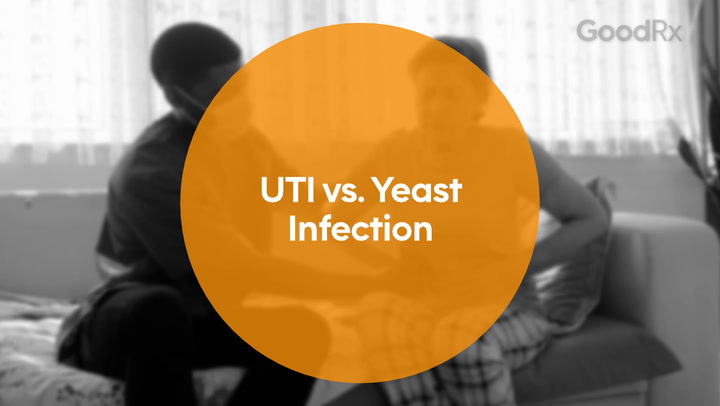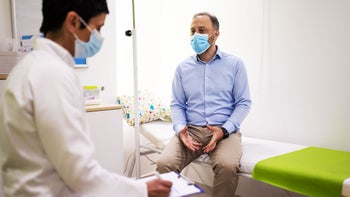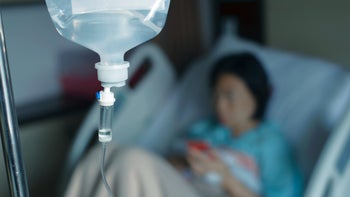
What Exactly Is a Yeast Infection?
Key takeaways:
Candidiasis is an infection that results from the overgrowth of yeast. Vaginal yeast infections are the most common type of candidiasis.
Most yeast infections are mild and easily treated with oral or topical medication.
Other conditions may cause symptoms similar to a yeast infection.

What is Candida?
Candida refers to a group of fungi species that fall under the “yeast” family. These fungi typically exist harmoniously with bacteria as part of the healthy flora and fauna on the surfaces of our body (such as on the skin and in the gastrointestinal tract). However, sometimes the balance can tip, and an overgrowth of Candida can cause an infection.
What is the difference between Candida and candidiasis?
Candidiasis is the name of the condition caused by too much Candida. You can get candidiasis in many different parts of the body, including:
The tongue and mouth (referred to as “thrush”)
The gastrointestinal tract (the esophagus and intestine)
Male and female genitalia
The skin
It’s even possible for Candida to infect the heart, brain, kidneys, or bloodstream — but these infections are rare.
What causes candidiasis?
Several factors can contribute to unchecked growth and infection from Candida species. Some of these include:
Medications (such as antibiotics, which can decrease the numbers of healthy bacteria that keep yeast under control)
Diabetes
Conditions or medications that affect the immune system (i.e., HIV, chemotherapy, immunosuppressants)
Is candidiasis dangerous?
Candidiasis can be bothersome, but it’s not dangerous. And it’s easily treatable.
Search and compare options
Candida infections of the bloodstream, lungs, and other internal organs are very uncommon and develop only when people have severely decreased immune systems and are very sick. In other words, a vaginal yeast infection is not going to lead to a life-threatening bloodstream infection.
What is vaginal candidiasis?
Vaginal candidiasis is the most common form of candidiasis, and is the condition that people typically refer to as a “yeast infection.” It is most common for the infection to occur in the external tissues of the vagina, which are referred to as the “vulva,” but it can also extend into the vagina and cervix, or the area around the anus.
How do I know if I have a yeast infection?
The most common symptom of a yeast infection is vaginal itching. However, the symptoms can vary from person to person. Other common symptoms include:
A pain or burning sensation in the vagina
Pain with urination or sexual intercourse
Redness or soreness of the affected skin
Abnormal discharge (often thicker and whiter than typical vaginal discharge)
What causes a vaginal yeast infection?
Yeast infections develop when the pH of the vagina changes. Normally, the vagina is slightly acidic, which helps to maintain normal levels of bacteria and yeast. If that pH changes and the vagina becomes less acidic, it is easier for the yeast to grow.
Many times, yeast infections develop without any obvious cause. But some risk factors make a yeast infection more likely by changing the vagina’s pH or affecting the bacteria that normally live in the vagina. These include:
Antibiotic use
Diabetes
Increased estrogen levels, such as during pregnancy
Immunosuppression (from an underlying disease or medications such as steroids)
The association between yeast infections and sexual intercourse is less clear. Yeast infections are not considered a sexually transmitted disease because Candida is a natural part of the vaginal ecosystem, and infections can occur in abstinent people. But there is some research to suggest that frequent sexual intercourse may increase the risk for yeast infections, although the reasons behind this are unclear.
How do you diagnose a yeast infection?
A person often knows when they have a yeast infection because they develop vaginal itching, which can be pretty intense and irritating. But yeast infections can share similar symptoms with other conditions, and evidence suggests that self-diagnosis is frequently inaccurate.
Here are some helpful indicators that your symptoms may be coming from something other than a yeast infection. You have:
A noticeable rash
Vaginal discharge with a strong or foul odor
Significant pain in the vagina
Burning or pain with urination, or a frequent urge to urinate
Abdominal pain
Abnormal bleeding or blood in the urine
If you are unsure if you have a yeast infection or if your symptoms are not improving with over-the-counter treatment, your clinician can run some easy tests to look for yeast overgrowth. One test is to measure the pH of the vagina (with a simple pH paper). The other test is a painless swab of the vagina, which is then examined under a microscope.
How do you treat a yeast infection?
There are two types of treatment for yeast infections: oral medication (a pill) and topical medication (a cream or gel applied to the vagina). Research suggests that both are equally effective. As always, there are advantages and disadvantages to both. Let’s compare the options:
| Oral Medication | Topical Medication | |
|---|---|---|
| Name | Fluconazole | Clotrimazole, Miconazole |
| Prescription Required? | Yes | No |
| Dosing | One-time dose | Ranges from one-time dose to one week of daily application |
| Speed of action | Typically takes 2-3 days for symptoms to go away | Often soothes symptoms immediately |
| Side effects | Typically well-tolerated but can have multiple side effects (gastrointestinal upset, allergic reaction, or rash) | Mild skin irritation where the medication is applied |
| Safety concerns | Not safe for pregnant people or patients with liver disease | Safe |
How can you prevent candidiasis?
The best way to prevent yeast infections is to maintain the vagina’s normal balance and pH. Tips for this include:
Wash your vagina regularly with gentle soap, and don’t douche.
Wear loose, breathable underwear and clothing.
When menstruating, use unscented tampons, and don’t leave them in for longer than 8 hours.
Avoid heavily scented products (such as feminine deodorants or powders, bubble baths, clothing detergents)
The bottom line
Yeast infections result from the overgrowth of fungi that naturally live on our skin. While the symptoms often feel intense, candidiasis is typically a mild infection easily treated with either a pill or topical medication. If you have any concerns your symptoms may be from something other than a yeast infection, a clinician can help with easy testing.
Why trust our experts?

References
Ferris, D. G., et al. (1996). Women's use of over-the-counter antifungal medications for gynecologic symptoms. Journal of Family Practice.
Foxman, B. (1990). The epidemiology of vulvovaginal candidiasis: Risk factors. American Journal of Public Health.
Watson, M. C., et al. (2001). Oral versus intra-vaginal imidazole and triazole anti-fungal treatment of uncomplicated vulvovaginal candidiasis (thrush). Cochrane Database of Systematic Reviews.



















